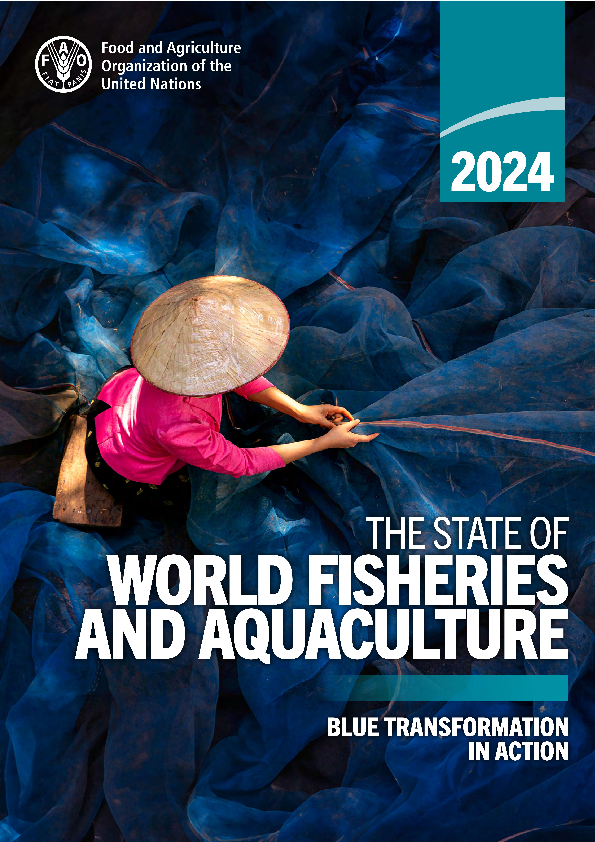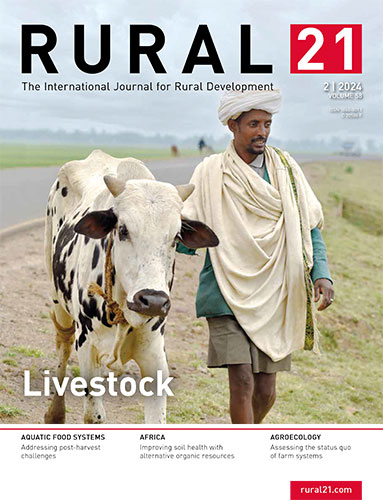 Read this article in French
Read this article in French- Share this article
- Subscribe to our newsletter
The State of World Fisheries and Aquaculture 2024
Global fisheries and aquaculture production in 2022 surged to 223.2 million tonnes, a 4.4 per cent increase from the year 2020, according to the report The State of World Fisheries and Aquaculture (SOFIA), published by the Food and Agriculture Organization of the United Nations (FAO) in June 2024. Production comprised 185.4 million tonnes of aquatic animals and 37.8 million tonnes of algae.
Global aquaculture production reached an unprecedented 130.9 million tonnes, of which 94.4 million tonnes were aquatic animals, 51 per cent of the total aquatic animal production.
Aquaculture growth indicates its capacity to further contribute to meeting the rising global demand for aquatic foods, but future expansion and intensification must prioritise sustainability and benefit regions and communities most in need.
At present, a small number of countries dominate aquaculture. Ten of them – China, Indonesia, India, Viet Nam, Bangladesh, the Philippines, Republic of Korea, Norway, Egypt and Chile – produced over 89.8 per cent of the total. But many low-income countries in Africa and Asia are not using their full potential. Targeted policies, technology transfer, capacity building and responsible investment are crucial to boost sustainable aquaculture where it is most needed, especially in Africa.
Of total aquatic animal production, 89 per cent was used for direct human consumption, underscoring the critical role of fisheries and aquaculture in maintaining global food security. The rest was destined for indirect or non-food uses, mainly fishmeal and fish oil production.
Most capture fisheries production comes from sustainable stocks
Global capture fisheries production has remained stable since the late 1980s. In 2022, the sector produced 92.3 million tonnes, comprising 11.3 million tonnes from inland and 81 million tonnes from marine capture. Despite the growth in aquaculture, capture fisheries remain an essential source of aquatic animal production.
The proportion of marine stocks fished within biologically sustainable levels, however, decreased to 62.3 per cent in 2021, 2.3 per cent lower than in 2019. When weighted by production level, an estimated 76.9 per cent of the 2021 landings from stocks monitored by FAO were from biologically sustainable stocks. This underscores the role that effective fisheries management can play in facilitating stock recovery and increased catches, highlighting the urgent need to replicate successful policies to reverse the current declining trend.
Aquatic animal production expected to rise
SOFIA also contains FAO’s outlook for fisheries and aquaculture, which projects increases in world production and apparent consumption for the period up to 2032.
Aquatic animal production is expected to increase by 10 per cent by 2032 to reach 205 million tonnes. Aquaculture expansion and capture fisheries recovery will account for this rise.
SOFIA projects that apparent consumption will increase by 12 per cent to supply on average 21.3 kg per capita in 2032. Rising incomes and urbanisation, improvements in post-harvest practices as well as distribution and dietary trends are expected to drive most of this increase.
However, per capita apparent consumption in Africa will continue to decrease, as production projections may not keep up with population growth. This is especially alarming for sub-Saharan Africa where many countries are dependent on aquatic foods to meet their nutritional needs, particularly animal proteins and micronutrients.
Important income source for millions
In addition to nutrition and food security, fisheries and aquaculture are an important source of livelihoods. According to the latest data, an estimated 61.8 million people were employed in the primary sector of fisheries and aquaculture in 2022, down from 62.8 million in 2020.
Sex-disaggregated data indicated that women made up 24 per cent of the overall workforce but 62 per cent in the processing subsector. Gender inequality issues remain, including differences in wages, insufficient recognition of women’s contribution to the sector and gender-based violence.
(FAO/ile)
Read more and download the report on the FAO website





Add a comment
Be the First to Comment